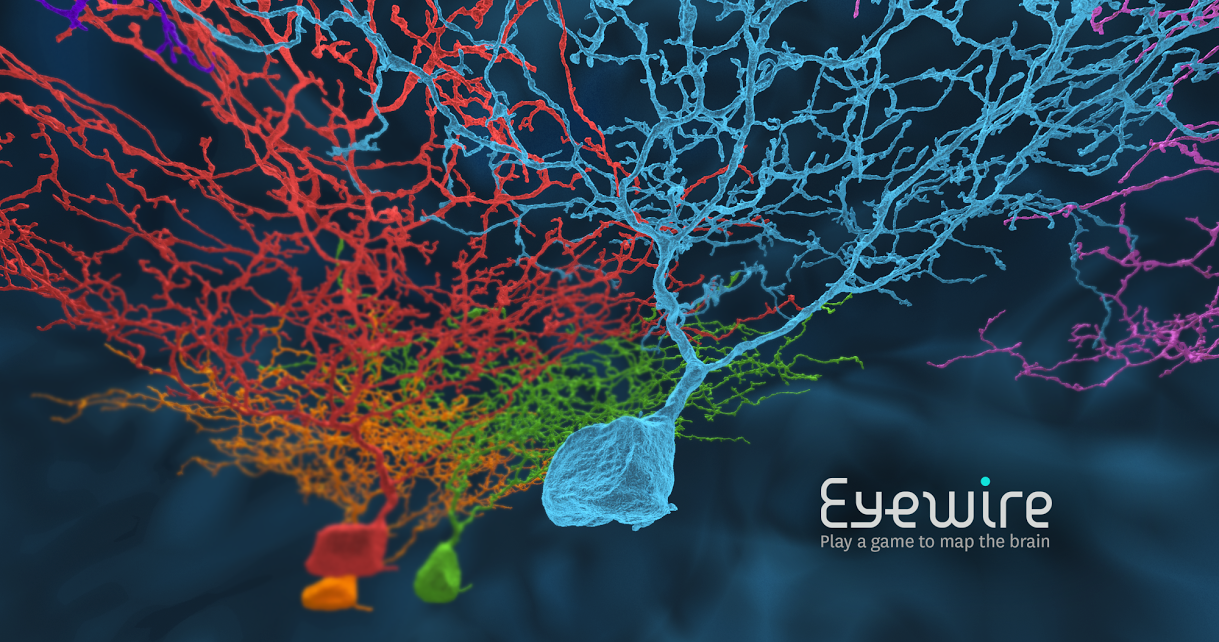EyeWire: Crowd Sourced Research
Do you fancy yourself a scientist? Are you unable to work in a laboratory? Now with online crowd sourcing technology, you can be on the front line of cutting-edge discoveries. In the same fashion that people raise money through crowd sourcing on websites like KickStarter and GoFundMe, researchers at MIT have created a program to capitalize on the thousands of people that have access to a computer. The project is headed by Dr. Sebastian Seung using data collected from the Max Planck Institute for Medical Research. The goals of the project are to reconstruct the three-dimensional shapes of retinal neurons from two-dimensional images, to identify synapses in order to map the connections between neurons, and to relate this connectivity with the known activity of the neurons. Completion of these tasks will contribute to the overall goal of developing the connectome, a project with the same ideal of the Human Genome Project, but for neural connections instead of genes.
Currently, Eyewire is mapping four types of cells: amacrine, bipolar, ganglion, and glial cells. Many processes are used to map these cells. First, cells are photographed using serial block-face scanning electron microscopy (SBFSEM). This technique uses two groups of materials to stain a sample. The heavy metals osmium, lead, and uranium are used and an epoxy resin, or a type of plastic, are combined to produce a sample that can easily be read by a scanning electron microscope (SEM). The heavy metals react with a focused beam of electrons coming from the SEM to create a high resolution two dimensional image. A three dimensional image is created by combining layers of the sample, with each layer being about 70 microns thick.
After the sample is imaged, the next step is identifying which part of this image is the target neuron. This is done using two methods, artificial intelligence and human intelligence. The Seung lab has developed technology that aptly identifies which part of the image is the target neuron or neurite (the branches of the neuron). Unfortunately, this AI is unable to completely map each image. This is where crowd participation is necessary. As seen in the image below, the AI begins mapping the neuron by filling a space in with dark blue. A human player then adds to what the AI missed, which could be a hole in the branch, extending the branch, or even a new branch completely. A player works through a cube, or a small section of neuron, by scrolling through each of the layers. The artificial intelligence then “learns” how to complete a better model based off the human input. Each cube is traced by five to twenty-five participants before it becomes a validated model.
At the end of each week, a player’s performance is evaluated. Each cube they have completed, filled in with what the AI missed, is compared to what other players have filled in on the same cube. This method creates an “eyewire consensus” for each cube, allowing the program to rate players based on precision and recall. Precision is based on volume added correctly, or areas filled in, while recall is based on volume omitted, or areas that are not shaded. High precision would mean a player correctly fills in much of the area, and low would mean they have filled in areas that are not in agreement with the consensus. High recall would mean that the player missed a few of the correct shadings and low recall would mean the player missed many of the correct shadings. These scores are given to individual players so they are able to improve their personal performance.
The importance of crowd sourcing technology for research is becoming ever more evident. It typically takes the Seung lab about 50 hours to map a neuron. Given that there are an estimated 85 billion neurons in the brain, crowd sourcing is needed to speed up this process. As of this August, Eyewire has mapped 26 cells completely. This low number is attributed to the focus the lab puts on accuracy. To reach this accomplishment, more than 70,000 people participated by completely over a million cubes.
Sign up here to help out with this extraordinary approach to human brain mapping:
EyeWire: A Game to Map the Brain
-Ben Lawson
Sources:
EyeWire: A videogame that recruits players to map the brain – Wired.co.uk
Serial block-face scanning electron microscope (SBFSEM) – EyeWire
F-Scores and Accuracy – EyeWire


